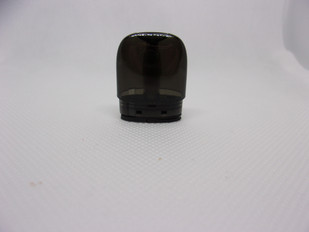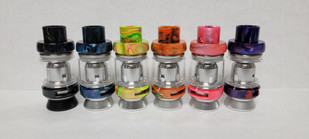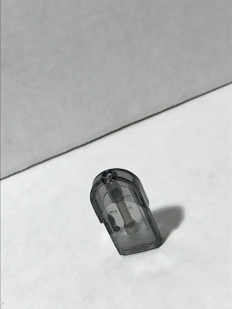- Home
- The Vape Mall Blog
- The History of Vaping and e-Cigarettes
The History of Vaping and e-Cigarettes
Posted on
How Long Has Vaping Been Around? A History of E-Cigarettes
Vaping is the term coined to describe the user of the e-cigarette. While the e-cigarette is a modern invention, its roots are in the process of vaporizing herbs to inhale the smoke produced, which has been around since ancient times.
The fact that vaping does not produce the harmful smoke found in traditional cigarettes has been one of its appeals. Vapor products do not impact bystanders in any way. However, the health risks of vaping are still not conclusive since the person vaping is still exposed to nicotine from the liquid compounds used in vaping.
The Ancient Predecessors of Vaping
Vaporization occurs when inhalants are added to steam that is produced by heating water. The Egyptian historian, Herodotus, was the first to write of users enjoying the inhalation of herbs that were vaporized over wet, heated rocks that were then fanned to disperse the smoke. His writings date back to the fourth century B.C., over 2,500 years ago.
About 1,500 years later, the first vaporizing device for smoking, the Indian shisha, was introduced. While neither the Egyptians nor the Indians get credit for the creation of vaping, their techniques and methods are the foundation of today's current vaping devices.
Who Invented Electronic Cigarettes?
There is no straightforward answer to this. Again, it depends on your definition of vaping. You could argue that its origins date back to the Egyptians. On the other hand, you could say that it only dates back to the current e-cigarettes and the popularization of the term "vaping" itself.
But even if your argument is for the more modern interpretation of the e-cigarette, there is no clear-cut "father of vaping," as our current devices are iterations of similar implements over approximately the last 100 years.
Joseph Robinson is credited with coming up with the idea of the first e-cigarette in 1927. It was not until almost 40 years later, in 1963, that inventor Herbert A. Gilbert obtained a patent for a "smokeless non-tobacco cigarette." His pitches to manufacturers of the day came up short, and none of the devices were ever mass-produced.
Phil Ray and Normal Jacobson attempted to commercialize the e-cig in the 1980s but were stymied by the Food and Drug Administration (FDA). The FDA did not allow tobacco companies to introduce e-cigarettes at that time.
This brings us to more recent times and Chinese inventor and pharmacist, Hon Lik. In the early 2000s, Lik made the first e-cigarette. His employer, Ruyan Group, now known as Dragonite International, assisted Lik in introducing his invention, first in Europe, then the rest of the world.
E-cigs first appeared in the U.S. in 2007, and rapidly gained in popularity. Cartomizers were invented by two brothers in the UK: Umer and Tariq Sheikh. These are only one of the many modifications that have transformed the e-cig over the last 10+ years, many of which have made the e-cig more consumer-friendly.
How Long Has Vaping Been Around?
Although the practice of inhaling herbs vaporized over heated rocks has existed since ancient Egyptian times, many would say that the modern colloquialism of "vaping" refers to the use of the modern e-cigarette, referring to the model introduced into common usage by Hon Lik in the early 2000s.
Components of the Modern e-Cig
Today's popular devices come from a variety of manufacturers, and some users even construct their e-cigs from the basic components described here. These customized devices or "mods" (modifications) are another reason vaping has become so popular, as its enthusiasts like the fact that they can personalize their vaping experience.
Every e-cig consists of at least four of the following components:
The cartridge or tank of the e-cig is what holds the substance that will be vaporized for you to enjoy. This is referred to as e-liquid, or "e-juice" and comes in a variety of forms and flavors as well as carrying agents. Most, but not all, contain nicotine, which is why vaping is considered an alternative to smoking.
Each e-cig has a battery, which is the main component of the device. Its function is to provide the "e" (electricity) for the device. It has an LED indicator to show when it is on and can either be activated manually (by pressing a button) or automatically (by inhaling). Batteries are available in different charges. Be sure to familiarize yourself with its operation, as there have been instances of "vape explosions" from the improper use or handling of the battery.
Atomizers, Cartomizers and Clearomizers
The atomizer is the component of the e-cig that vaporizes the e-juice. It attaches directly to the battery and may or may not be connected directly to the cartridge/tank. It employs a coil to heat the liquid to a vapor, which is then inhaled. The e-juice drips directly on to the heated coil, producing the purest flavor of the vapor. The criticism of atomizers is that they need to be replaced frequently.
Cartomizers are attached directly to the battery and heat the liquid via a coil that is surrounded by polyfill. This polyfill slows the rate that the liquid is heated via the coil, thus making its life a little longer than when the e-juice is dripped directly onto an atomizer.
Clearomizers are also attached directly to the battery and are used to control the amount of liquid that is used while vaping. They employ a wick and have a transparent mechanism that allows the user to observe how much liquid is being consumed during the process of vaping. This is a relatively recent addition to the e-cig and is not found in all models or builds. They are more expensive than traditional builds but are often recommended for first-time users since the amount of vapor can be controlled. They also reportedly increase the life of e-juice, but there are no studies to back up this claim, although it does make sense that if you slow the disbursement of the vapor, the rate the media is used would slow as well.
Whether you consider vaping to have come around in 500 B.C., 1927, 1963 or 2003, it's obvious that vaping is not a fad. It's a method of enjoying smoked herbs and tobacco that has a rich and varied history. Whether you build your e-cigs or buy one readymade from a manufacturer, you can enjoy vaping economically and without endangering the health of others.
 Loading... Please wait...
Loading... Please wait...



















